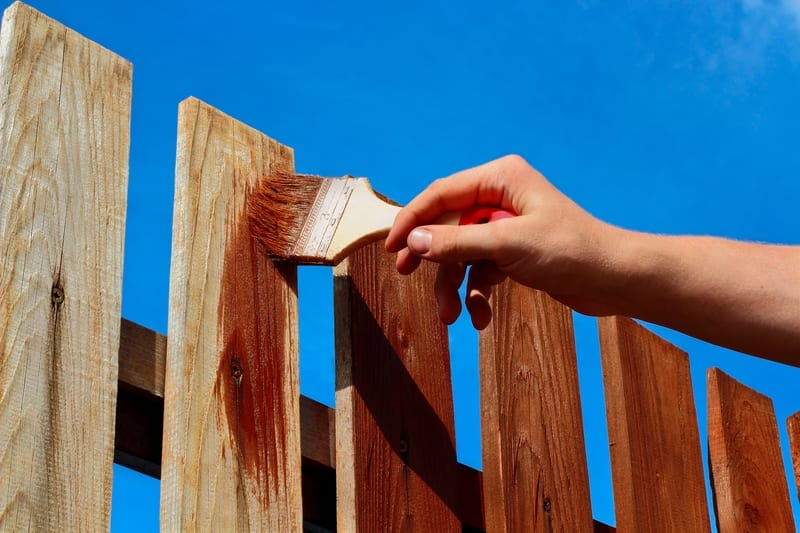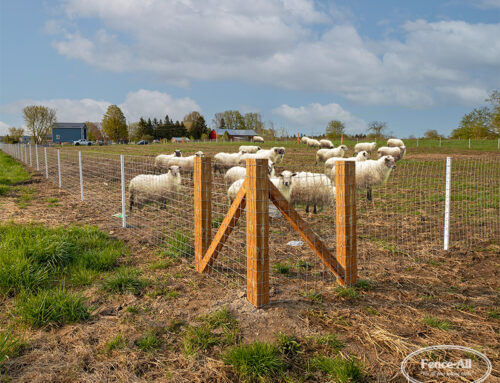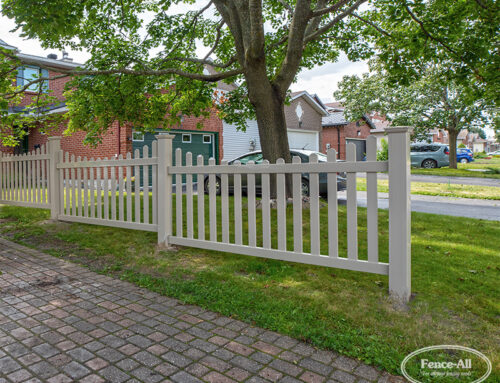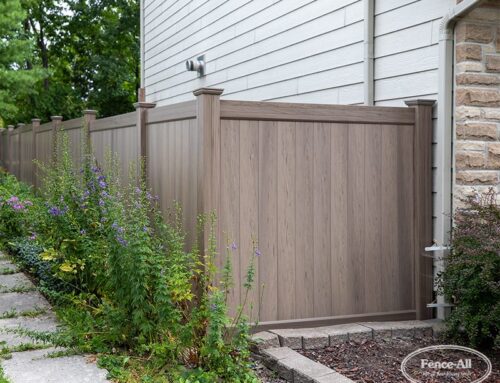Homeowners are always looking for ways to increase property value and improve their home’s appearance. For those with a handyman’s touch, improving the condition of your fence will surely increase property value and appearance. Weather and environmental surroundings will eventually alter the presentation of your fence, which is why so many homeowners look to re-paint or stain their fence in hopes that they can restore its aesthetically pleasing qualities. Before you decide to either stain or paint your fence, you should understand the differences between staining and painting.
Painting vs. Staining
If you were to open a can of paint and a can of stain, side by side, you would immediately notice that the stain has a much thinner viscosity. When you apply stain to a piece of wood, the stain is absorbed into the pores of the wood. When you apply paint to a piece of wood, it lays on the top of the surface, like icing on a cake. Paint and stain are similar in the way that they preserve and conserve the condition of the wooden fence; however, they both come with a different set of pros and cons.
A stain is an excellent option for homeowners that are in a time crunch. Whether you have little children or pets that run & play in your backyard, or you do a lot of landscaping, stain dries much faster than standard paints. A stain also doesn’t require as many coats to reach your desired look. Many homeowners prefer the natural colour of their wood fence, but because unstained wood may lose its vibrancy over time, they decide to paint over it. A stain will help homeowners keep the natural elements of the wood intact while accentuating its natural colour.
Painting provides homeowners with more options. A popular misconception with stains is that they do not need to be re-applied to a wooden surface, which is just untrue. Paint may chip and strip off but tend to withstand environmental conditions better than a stain. You can accentuate your personality with paint; stain comes in one single flat sheen, while painting provides homeowners with an array of available colours. If your fence has already been painted over, you can apply a different colour of paint on top of it to change its appearance. However, if you try to apply a layer of stain to your painted fence, it won’t stick, because it won’t be able to absorb into the wood.
Best Woods for Staining
If you plan on using stain, make sure your fence is comprised of either:
• Oak
• Ash
• Pine- ensure you only add a light stain
• Chestnut
Woods That You Should Not Stain Include:
• Birch
• Maple
• Cherry and mahogany- the aesthetic of these two kinds of wood are selling points for many homeowners, and it is suggested that you do not add a stain to cherry or mahogany.
For more information about staining or painting your fence, contact Fenceall today!








